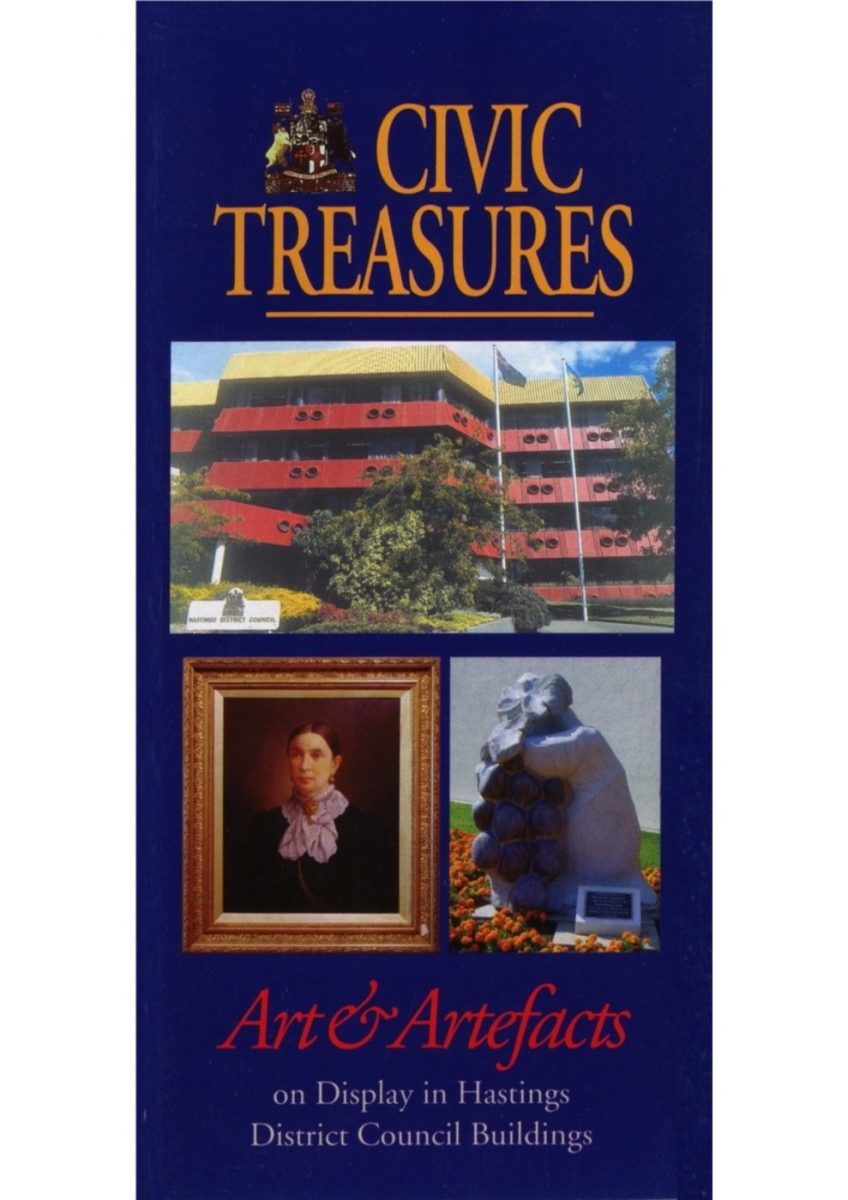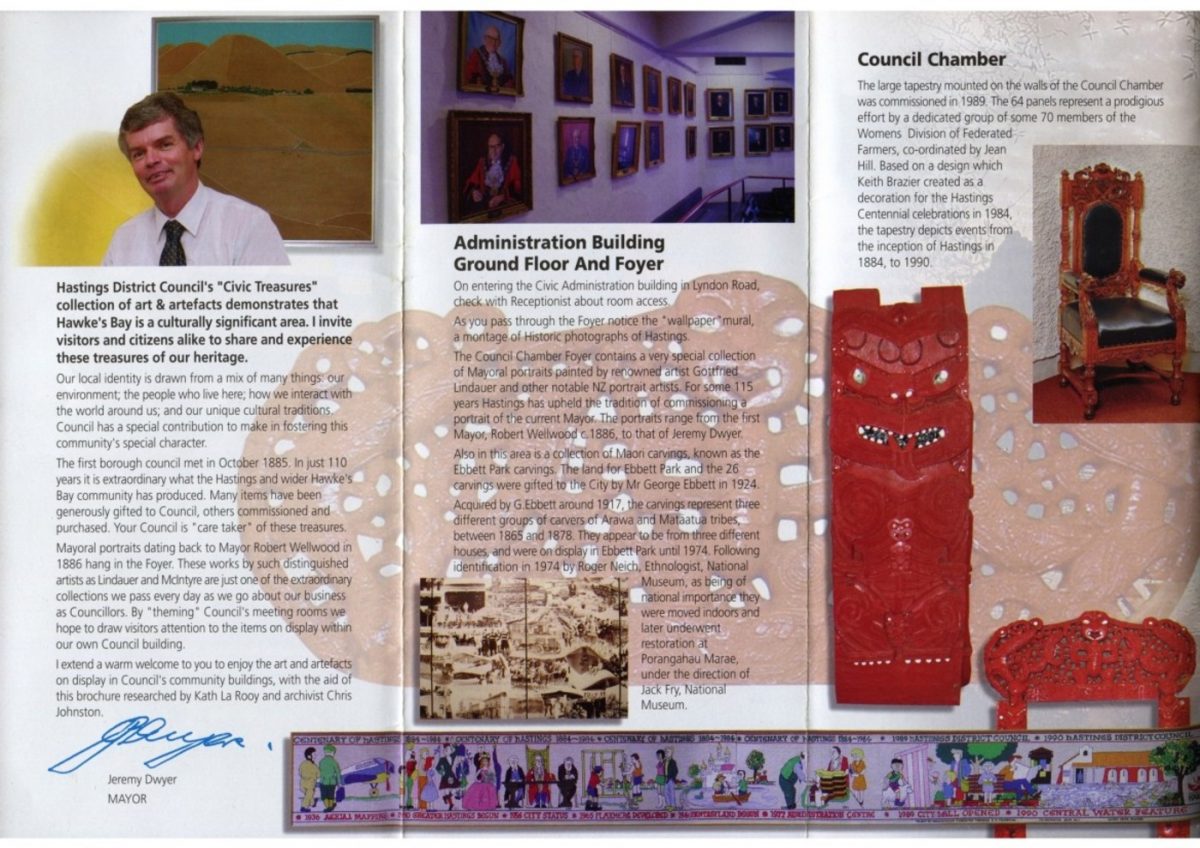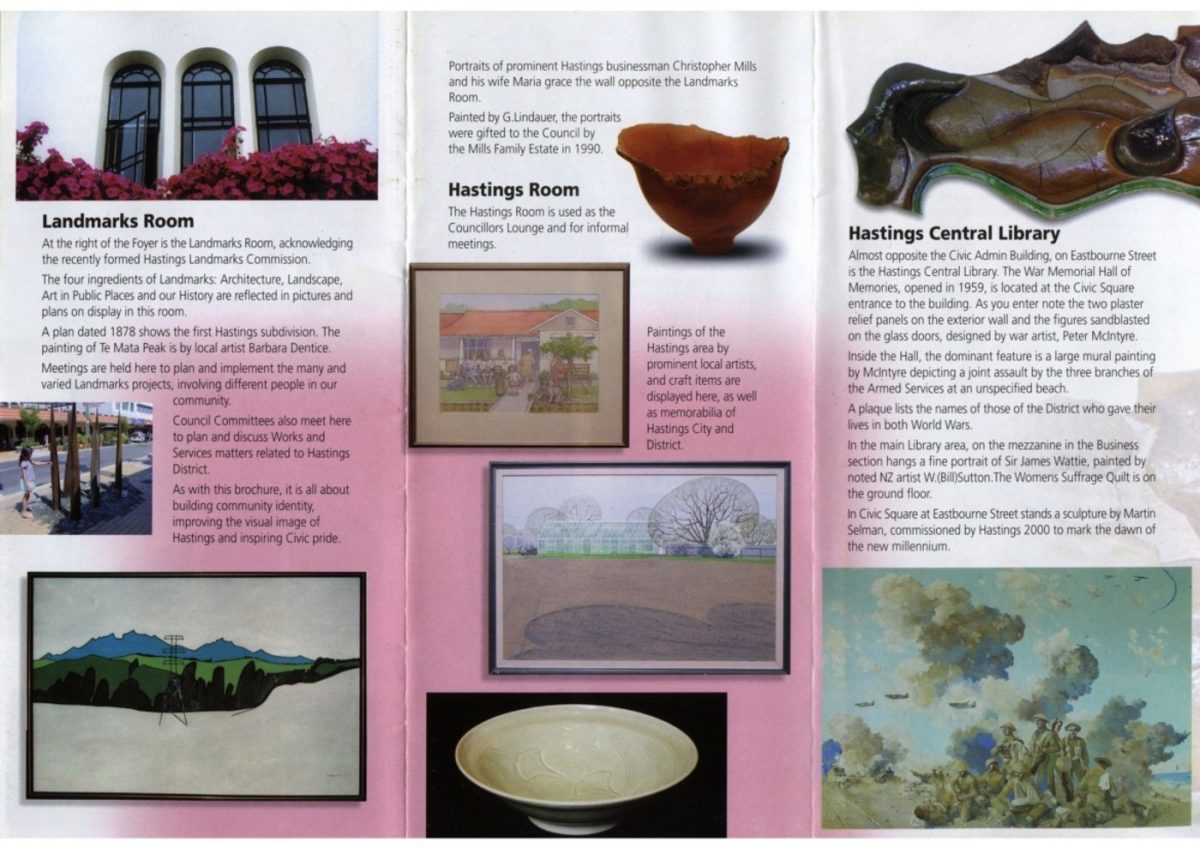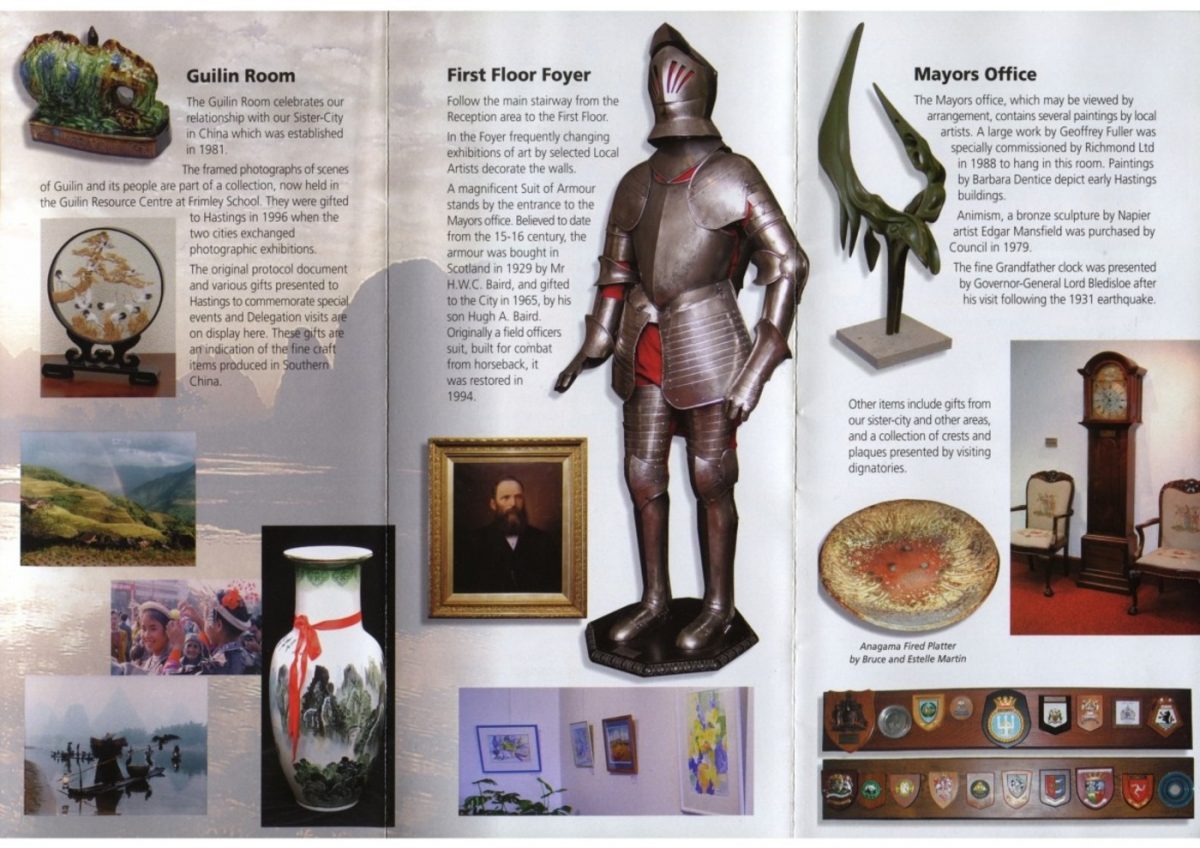Hastings District Council’s “Civic Treasures” collection of art and artefacts demonstrates that Hawke’s Bay is a culturally significant area. I invite visitors and citizens alike to share and experience these treasures of our heritage.
Our local identity is drawn from a mix of many things: our environment; the people who live here; how we interact with the world around us; and our unique cultural traditions. Council has a special contribution to make in fostering this community’s special character.
The first borough council met in October 1885. In just 110 years it is extraordinary what the Hastings and wider Hawke’s Bay community has produced. Many items have been generously gifted to Council, others commissioned and purchased. Your Council is “care taker” of these treasures.
Mayoral portraits dating back to Mayor Robert Wellwood in 1886 hang in the foyer. These works by such distinguished artists as Lindauer and McIntyre are just one of the extraordinary collections we pass every day as we go about our business as Councillors. By “theming” Council’s meeting rooms we hope to draw visitors attention to the items on display within our own Council building.
I extend a warm welcome to you to enjoy the art and artefacts on display in Council’s community buildings, with the aid of this brochure researched by Kath La Rooy and archivist Chris Johnston.
JP Dwyer
Jeremy Dwyer
MAYOR
Administration Building Ground Floor And Foyer
On entering the Civic Administration building in Lyndon Road, check with Reception about room access.
As you pass through the Foyer notice the “wallpaper” mural, a montage of Historic photographs of Hastings.
The Council Chamber Foyer contains a very special collection of Mayoral portraits painted by renowned artist Gottfried Lindauer and other notable NZ portrait artists. For some 115 years Hastings has upheld the tradition of commissioning a portrait of the current Mayor. The portraits range from the first Mayor, Robert Wellwood c. 1886, to that of Jeremy Dwyer.
Also in this area is a collection of Maori carvings, known as the Ebbett Park carvings. The land for Ebbett Park and the 26 carvings were gifted to the City by Mr George Ebbett in 1924.
Acquired by G. Ebbett around 1917, the carvings represent three different groups of carvers of Arawa and Mataatua tribes, between 1865 and 1878. They appear to be from three different houses and were on display in Ebbett Park until 1974. Following identification in 1974 by Roger Neich, Ethnologist, National Museum, as being of national importance they were moved indoors and later underwent restoration at Porangahau Marae, under the direction of Jack Fry, National Museum.
Council Chamber
The large tapestry mounted on the walls of the Council Chamber was commissioned in 1989. The 64 panels represent a prodigious effort by a dedicated group of some 70 members of the Womens Division of Federated Farmers, co-ordinated by Jean Hill. Based on a design which Keith Brazier created as a decoration for the Hastings Centennial celebrations in 1984, the tapestry depicts events from the inception of Hastings in 1884, to 1990.
















Do you know something about this record?
Please note we cannot verify the accuracy of any information posted by the community.